
It is no secret that great food is the best way to one’s heart.
For huge foodies searching for a thriving gastronomic lifestyle, famous local delicacies can have a big impact on their choice of the ideal place to call home.
The Philippines is well known for its rich, varied, and savory cuisine, which combines a variety of global influences. There is no shortage of delectable foods to try, from hearty stews to decadent sweets. Ultimately, you may enjoy these luscious delights in your own neighborhood.
Let’s explore the culinary experiences in the Central Visayas. The food and delicacies of the region are a reflection of its rich culinary heritage, blending a variety of flavors, cooking techniques, and ingredients. Here are 11 must-eats near Primary Homes Properties in the Visayas:
- Lechon
A whole roasted pig with exceptionally crispy skin and soft, tasty flesh, lechon is a delicacy made famous by Cebu but is a staple fiesta food all over Visayas.
Carcar City’s (Cebu) lechon is famous its distinct reddish color and flavor with a unique blend of spices, including tanglad (lemongrass), spring onions, and garlic.
Talisay City (Cebu) is renowned for its thin and crispy skin lechon prepared using a special marinade consisting of a combination of local spices and herbs roasted over an open fire, allowing the fat to drip away and creating a delectable crunch.
Meanwhile, Bohol Province’s Lechon is distinct as it is often stuffed with a mixture of native herbs and spices including pandan leaves infusing the meat with aromatic flavors.
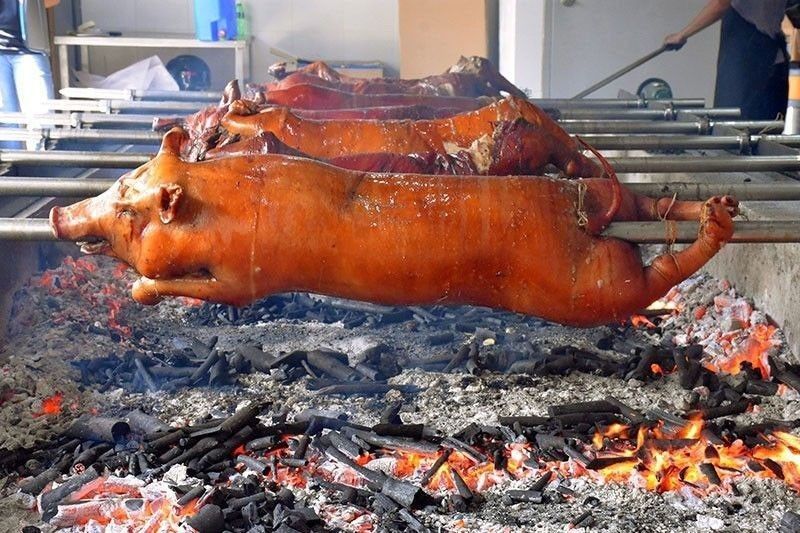
- Coconut Shell delicacies
Visayans have creatively put the various parts of coconuts to good use. Such is the case for the famous Calamay of Bohol and Binagol of Leyte that are served on a coconut husk adding to their already one-of-a-kind flavor.
Calamay is a sticky and sweet delicacy made from glutinous rice, coconut milk, and brown sugar, painstakingly cooked and continuously stirred until it reaches a thick and smooth consistency. What sets Calamay apart is the addition of toasted peanuts, giving it a delightful crunch and nutty flavor.
On the other hand, Binagol is a steamed cake made from grated taro (gabi), mixed with coconut milk, sugar, and various flavorings such as vanilla or chocolate. The mixture is then wrapped in banana leaves and steamed until it becomes soft and creamy.
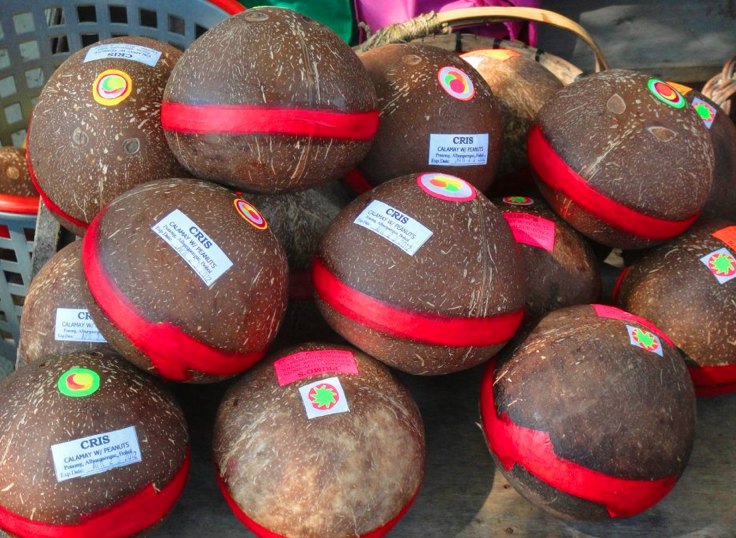
- Bohol Peanut sweets
Bohol is known for its delectable delicacies that sweet lovers would definitely fall in love with. These treats are unique reminders of the province’s ingenuity in sugary treats.
The Peanut Kisses and Star Peanuts, for example, are bite-sized cookies made from finely ground peanuts, sugar, and egg whites. The combination of the rich, nutty flavor of peanuts with the delicate sweetness creates a delightful treat that is loved by locals and visitors alike.
- Ube
Ube Kinampay is another Bohol delicacy that is traditionally cooked by steaming or boiling the purple yam until tender, then mashing it with sugar, butter, and sometimes coconut milk. The result is a smooth and vibrant purple dessert with a rich, earthy taste that is commonly used as a base for other sweet treats like cakes, pastries, and ice cream, or simply enjoyed on its own for its unique flavor.
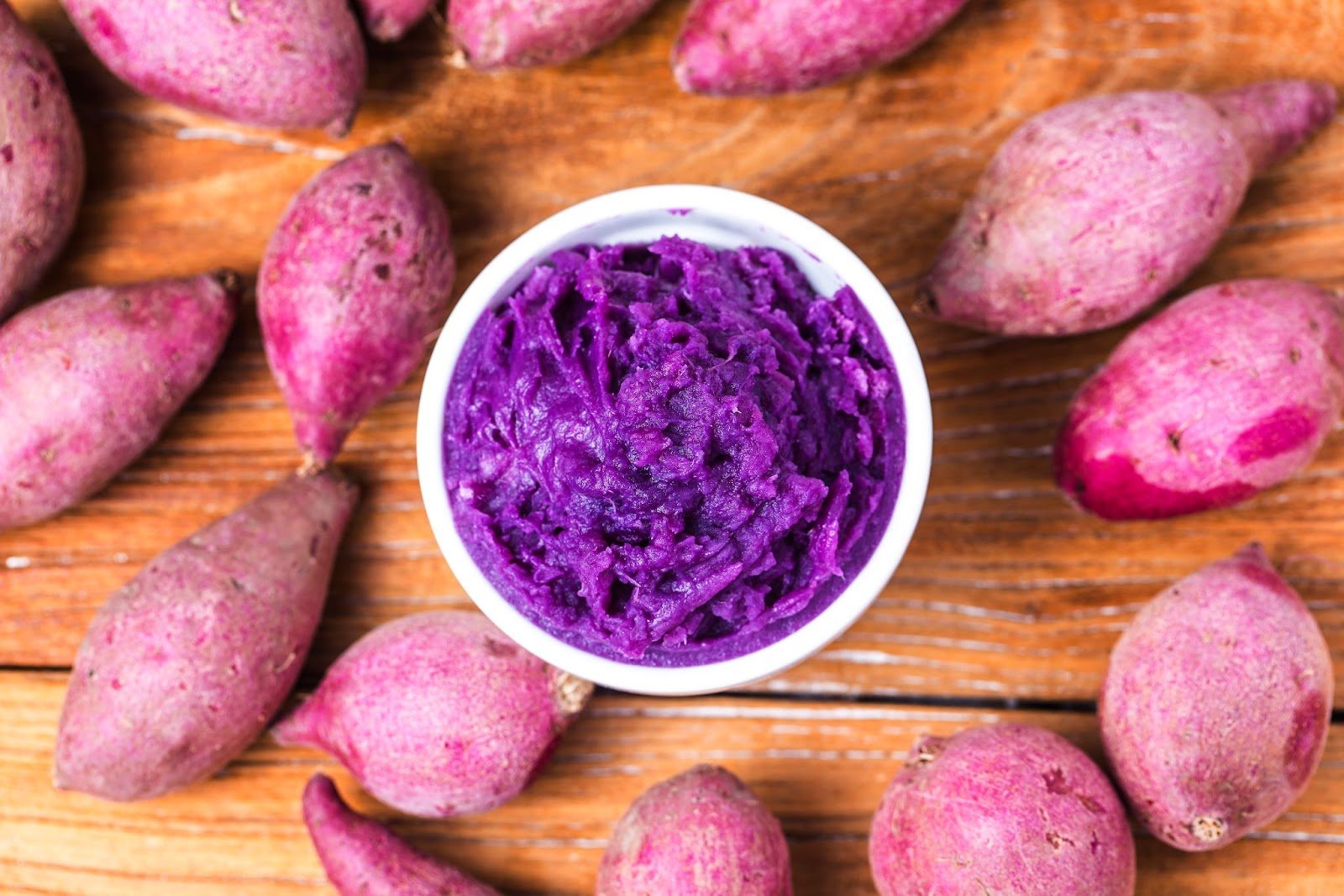
- Buwad or dried fish
Buwad or dried fish holds a special place in Cebuano cuisine and is a staple in many households. Varieties of seafood dried out to crisp provides a plethora of flavors to experience.
Such is the danggit, the most popular and widely consumed dried fish in Cebu made from small rabbitfish that are sun-dried until they become crispy and golden brown. Danggit is known for its distinct aroma and savory flavor.
Pusit (dried squid), on the other end is sun-dried until it becomes firm and chewy creating a rich flavor with a slightly sweet taste. It can be grilled, fried, or simply enjoyed as a snack.
Bisugo, also known as threadfin bream, is a type of fish commonly sun-dried until it becomes crispy and brittle. Bisugo buwad is known for its delicate and flaky texture, as well as its mild and slightly sweet taste. It is often pan-fried or deep-fried to bring out its delicious flavors.
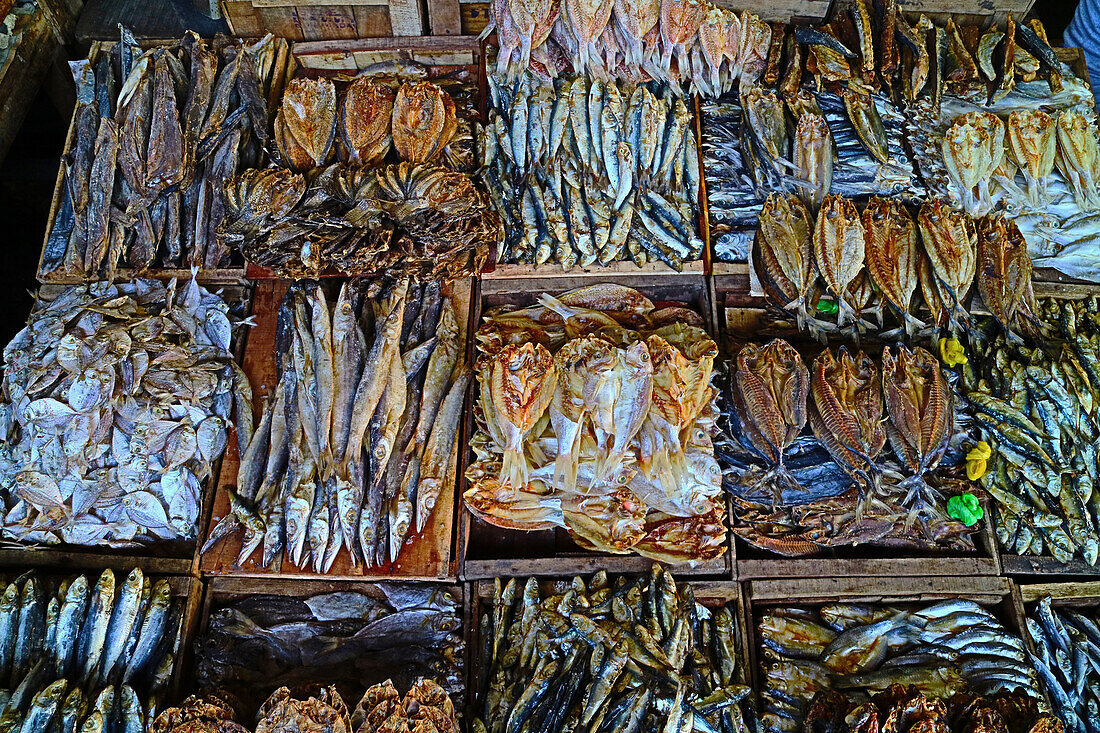
- Chorizo
Chorizo is a beloved sausage in the Visayas that captivates taste buds with its rich flavors
Toledo City’s (Cebu) Chorizo de Toledo is a flavorful sausage with a hint of sweetness characterized by its reddish color and the perfect balance of spices, including paprika, garlic, and vinegar.
In comparison, the classic Chorizo de Cebu is known for its savory and slightly spicy taste marinated for several hours to enhance its taste and then grilled or fried to perfection.
Meanwhile, Chorizo Bungkag of Negros Occidental is a unique variation of chorizomade by stuffing the chorizo mixture into a natural casing, often derived from pig intestines giving the sausage a distinct shape and texture.
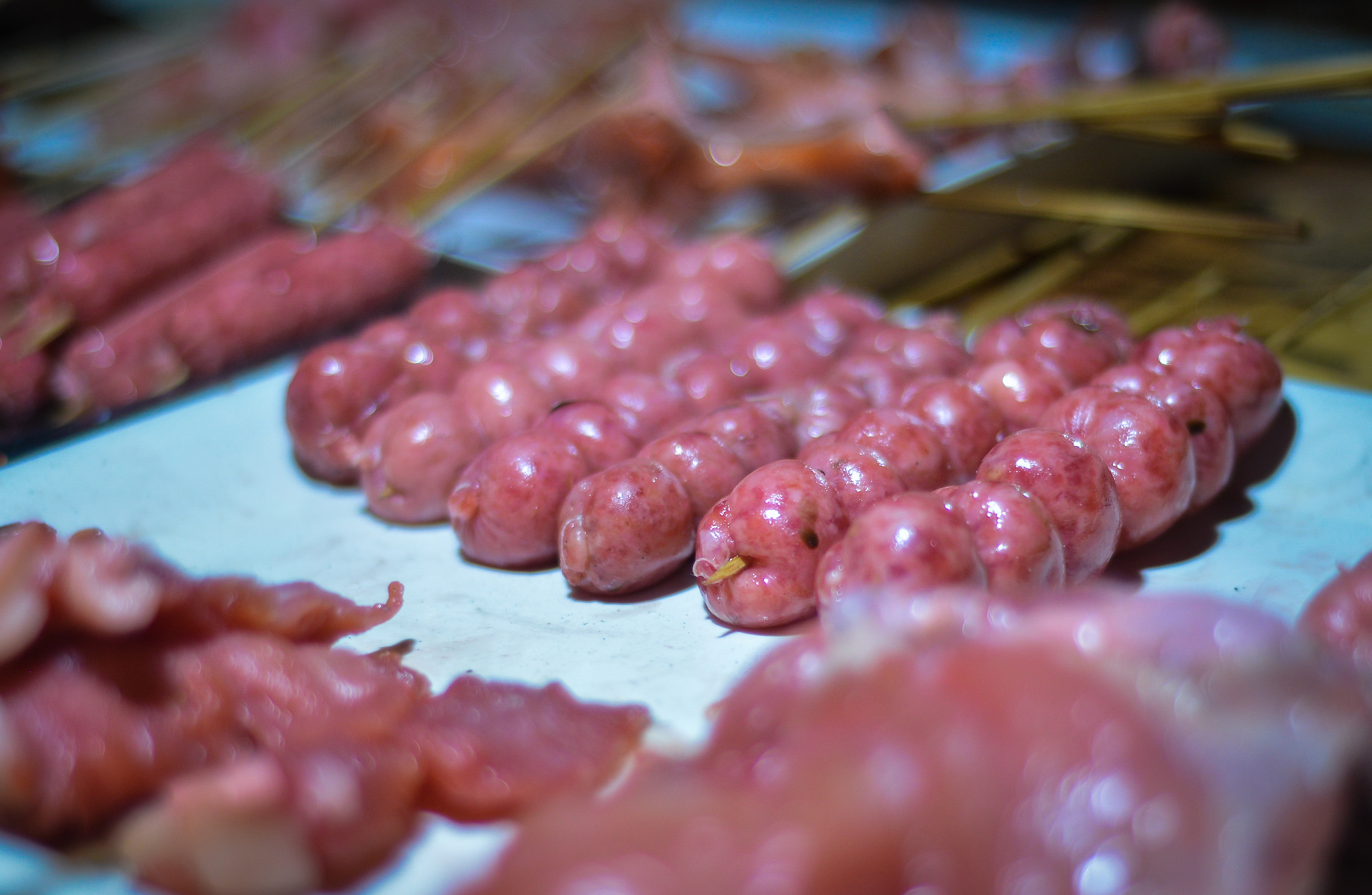
- Budbud
Budbud, is a sticky rice cake made from glutinous rice that is soaked in coconut milk and sweetened with sugar. There are different varieties of budud such as Suman Latik, Ibos, Moron, Kabog, and budbud pilit Tanjay
Suman Latik is a type of budbud that originated in the Visayan made special with the addition of a sweet coconut caramel sauce giving the suman a rich and indulgent flavor. Ibos is a variety of budbud that is popular in Ilo-ilo made from glutinous rice cooked in coconut milk and wrapped in young coconut leaves, giving it a distinctive elongated shape.
Moron is a well-known budbud variety that originates from Leyte and Samar made by combining ground glutinous rice and chocolate, giving it a delightful chocolaty flavor. Budbud Kabog is another budbod variety from the Visayas made from millet grains called "kabog," which give it a distinct nutty taste.
Lastly, Budbud Pilit from Tanjay, Negros Oriental is a renowned delicacy made from glutinous rice cooked with coconut milk and sweetened with sugar.
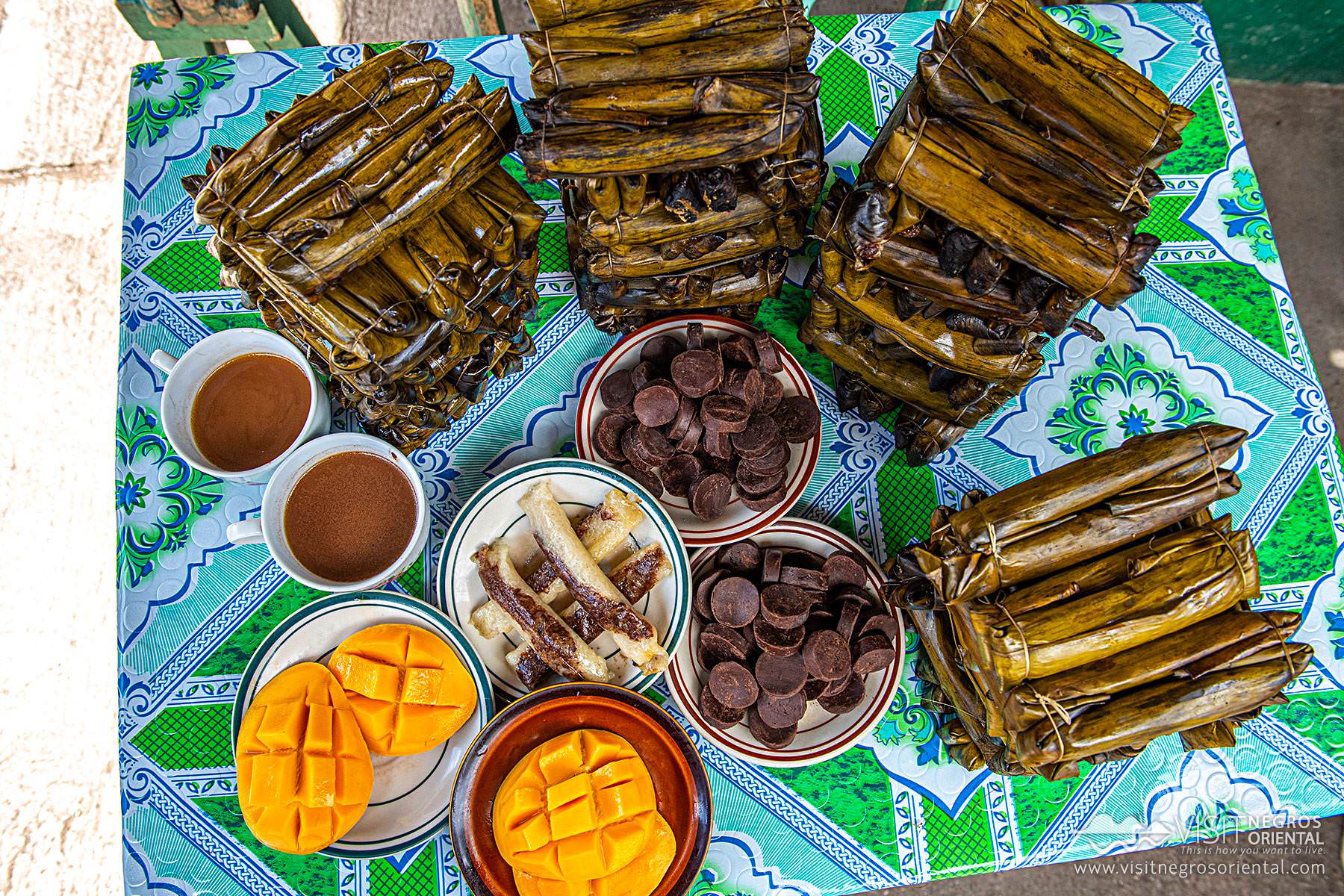
- Puso
Puso, also known as hanging rice, is a distinct culinary delight that originates from Cebu. It is a unique way of cooking and serving rice that has become an iconic part of Cebuano cuisine. Puso got its name from its appearance, as it resembles a heart-shaped pouch made from woven coconut leaves.
To make puso, rice grains are placed inside the pouch and then cooked. The woven coconut leaves not only give puso its characteristic shape but also impart a subtle fragrance to the rice. Once cooked, the puso is taken out of the pouch, revealing a compacted and perfectly-shaped rice block. It is then served alongside various grilled dishes, such as barbecue, lechon (roast pig).
Puso is convenient and portable way to enjoy rice that also adds a distinct flavor and aroma to the meal.
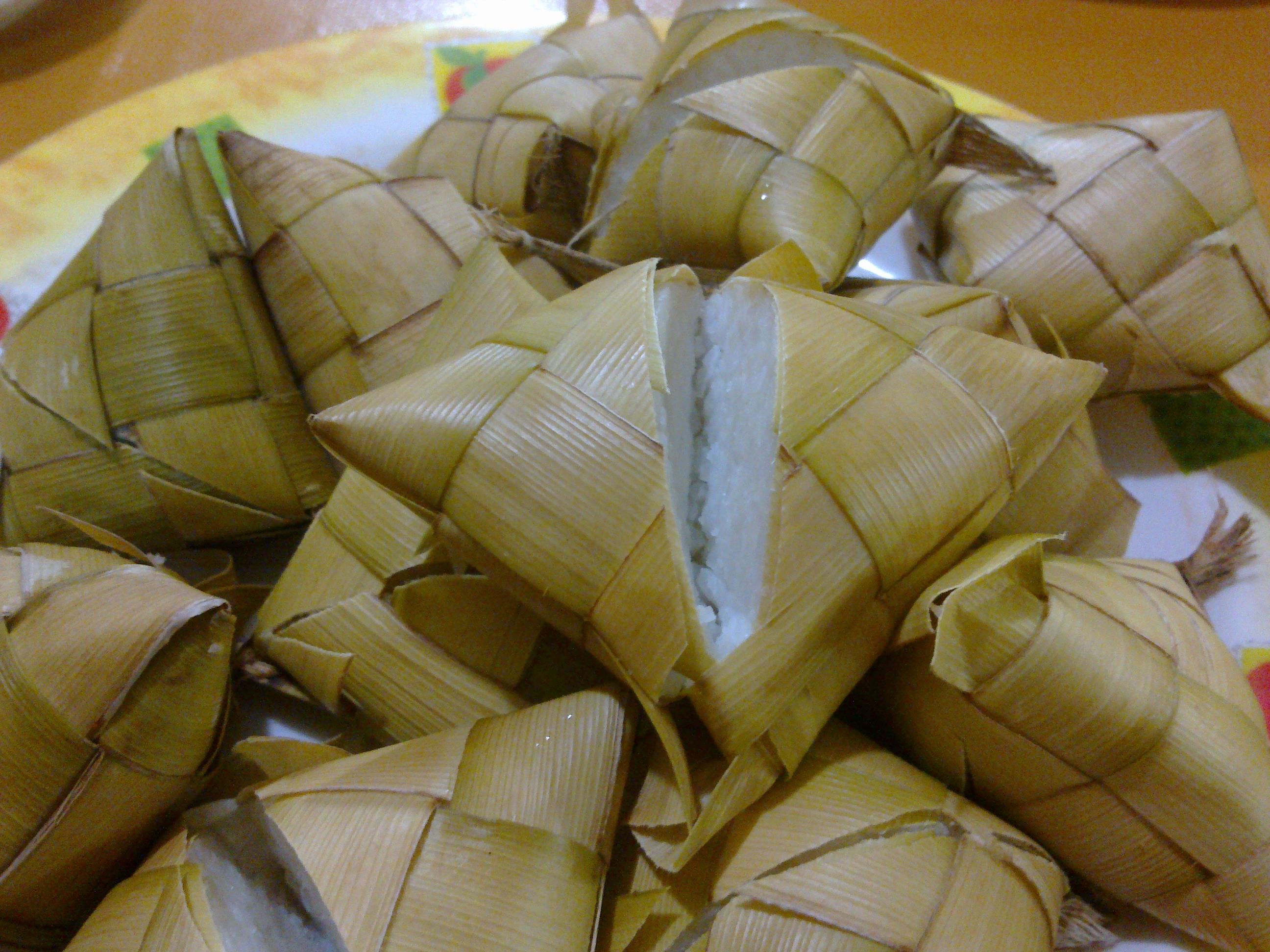
- Sutukil - Way of Cooking
Sutukil is a popular dining concept that combines the terms: "sugba" (grill), "tula" (stew), and "kilaw" (ceviche). It is a unique culinary experience that allows diners to choose their seafood or meat from a wide selection and have it prepared using one or a combination of these cooking techniques.
When dining at a sutukil restaurant, patrons are presented with an array of fresh seafood and meat options, such as fish, shrimp, squid, crabs, and more. They can select their preferred items and specify how they want them cooked – grilled, stewed, or served as a refreshing ceviche.
The grilling method adds a smoky and charred flavor to the seafood, while the stewing technique results in tender and flavorful dishes. The kilaw method, on the other hand, involves marinating raw seafood in vinegar, citrus juices, and spices, creating a refreshing and tangy dish.
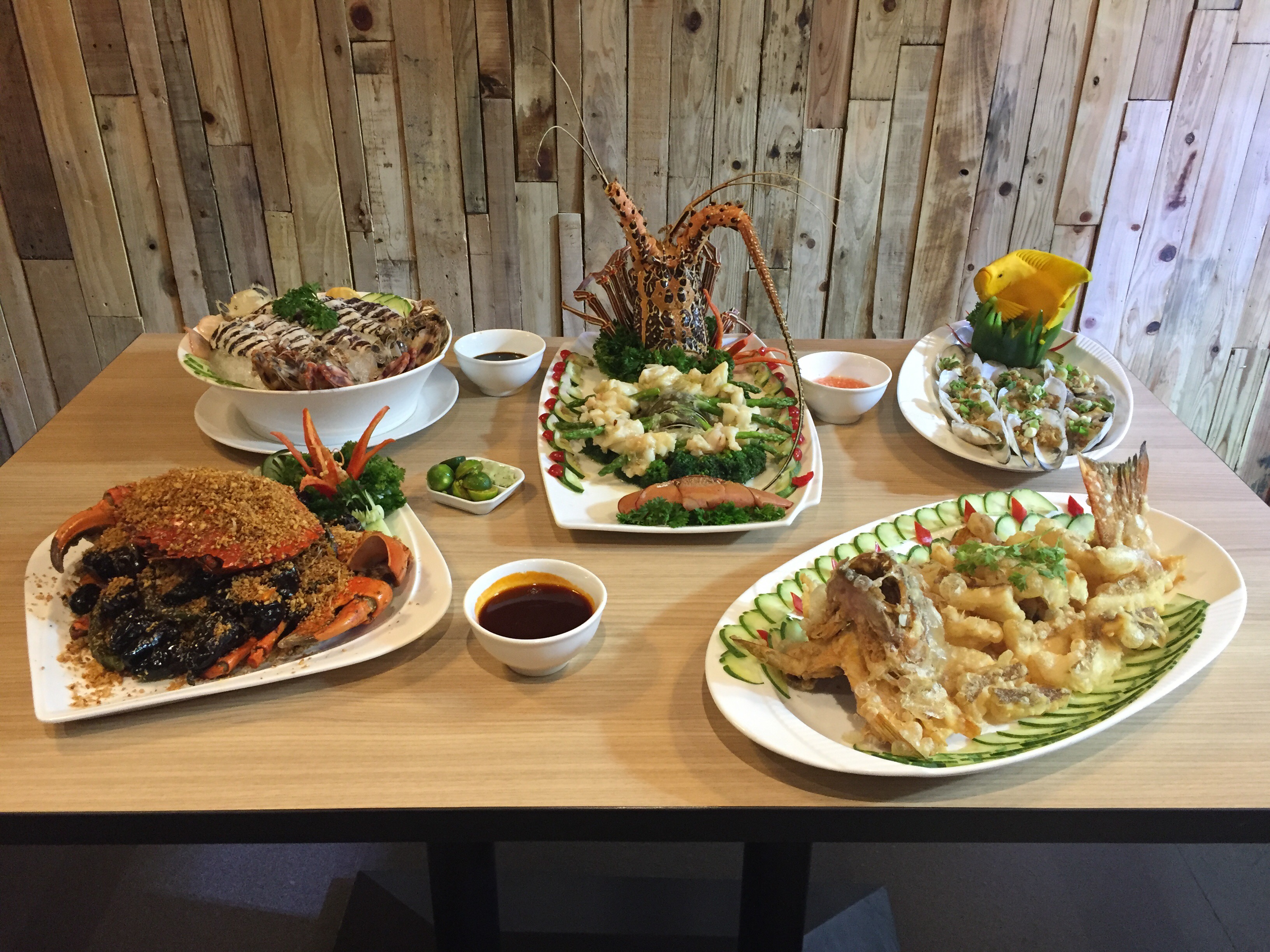
These are just some of the many great foods these locations can offer as you explore the local delicacies, immerse yourself in the lively food scenes, and unearth hidden gemstones.
When it comes to living near good food, look no further than Primary Homes' properties. Experience a vibrant culinary lifestyle that goes hand in hand with the beauty of these locations and don't miss out on this incredible chance to live near good food. Take the first step today and explore the Primary Homes properties in Central Visayas. Your dream culinary lifestyle awaits!
To book a tour, contact them through their website here.






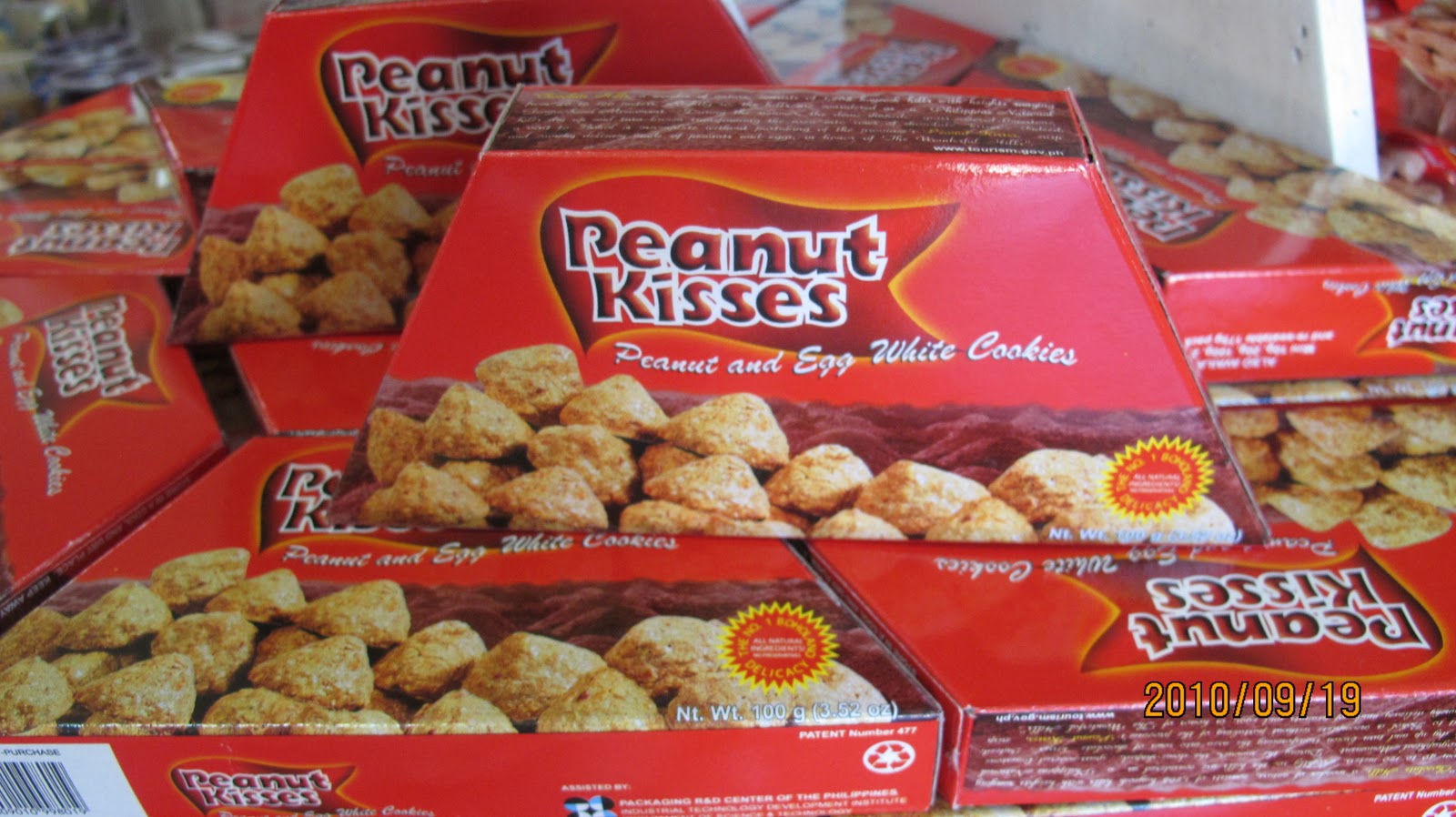
.jpg)
-min.jpg)


